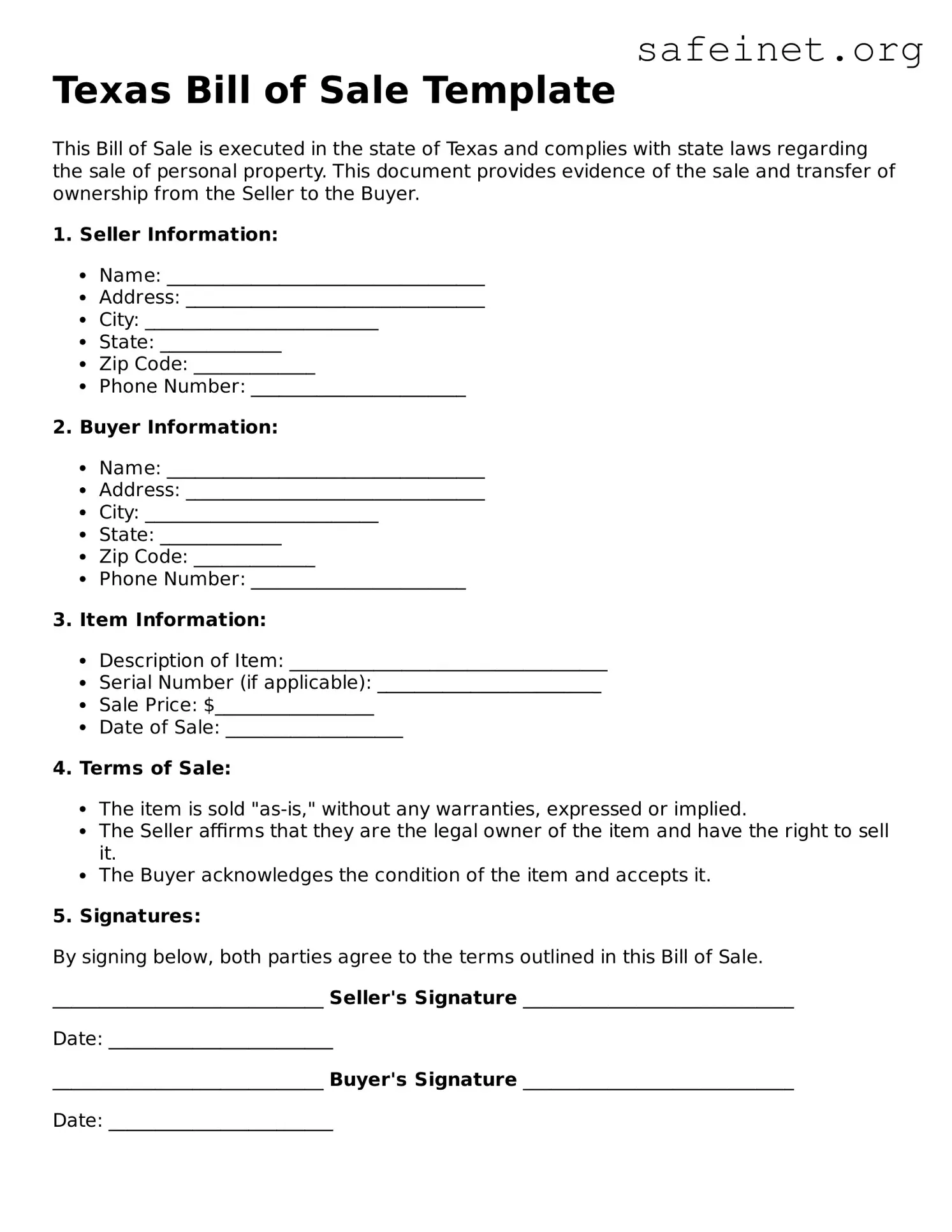What is a Texas Bill of Sale form?
A Texas Bill of Sale form serves as a written agreement between a seller and a buyer regarding the transfer of ownership of personal property. It documents the details of the sale, establishing proof that the property was sold and providing essential information about both parties involved in the transaction.
What information is typically included in the Texas Bill of Sale?
The form generally includes details such as the names and addresses of the buyer and seller, a description of the item being sold, the date of the transaction, and the sale price. Additionally, it may specify any terms of sale or warranties, if applicable. Accurate and complete information ensures clarity and reduces the risk of disputes later on.
Do I need a notary public for a Texas Bill of Sale?
A notary public is not required for a Texas Bill of Sale to be valid. However, obtaining a notary's signature may add an extra layer of authenticity and help to prevent future disputes. It can provide the seller with evidence that the transaction took place and that the buyer is the rightful owner of the item.
Is a Texas Bill of Sale legally binding?
Yes, a Texas Bill of Sale is a legally binding document once signed by both parties. It reflects the mutual agreement between the seller and buyer concerning the sale. If either party fails to fulfill their obligations as outlined in the Bill of Sale, legal recourse may be sought by the aggrieved party.
Can a Texas Bill of Sale be used for any type of property?
The Texas Bill of Sale can be utilized for various personal property transactions, including vehicles, boats, livestock, and equipment. However, specific items, especially real estate or intellectual property, have different legal requirements and may necessitate alternative forms or contracts.
Is a Texas Bill of Sale required for vehicle sales?
While not legally mandated for all vehicle sales, it is highly recommended to have a Bill of Sale for documenting the transfer of ownership. It helps both parties keep an accurate record of the transaction and can be required by the Texas Department of Motor Vehicles for registration purposes.
How do I obtain a Texas Bill of Sale form?
Texas Bill of Sale forms can be obtained from various sources. They can be found online as downloadable templates, purchased at office supply stores, or created manually, ensuring all pertinent information is included. Just make sure to comply with Texas laws regarding the item being sold.
Are there any specific laws governing the Texas Bill of Sale?
While the Texas Bill of Sale does not follow strict statutory requirements, it must adhere to general contract laws. Important elements such as mutual consent, a lawful object, and a legal consideration (payment) must be present. It’s essential to ensure the form aligns with these principles to maintain its enforceability.
What should I do if the seller does not provide a Bill of Sale?
If a seller declines to provide a Bill of Sale, it is advisable to request one for your records. If they refuse, consider taking notes on the details of the transaction and including any pertinent correspondence. This can serve as evidence should any issues arise in the future. Always proceed with caution and ensure you have a form of documentation for significant purchases.
